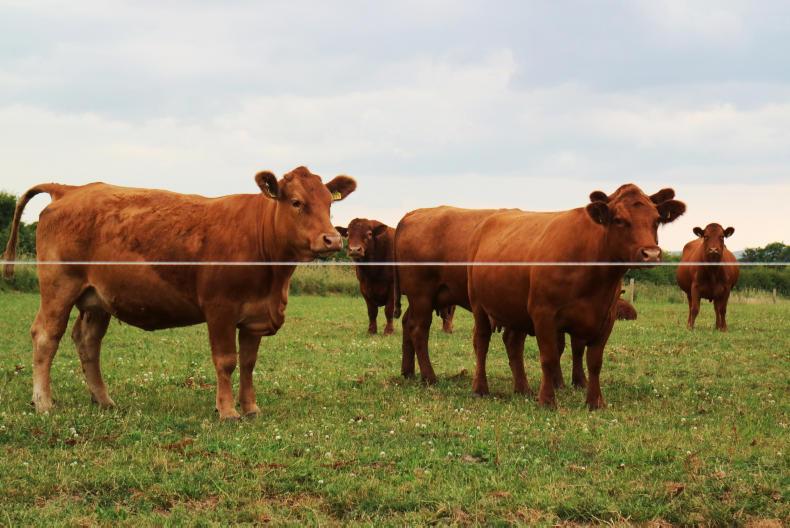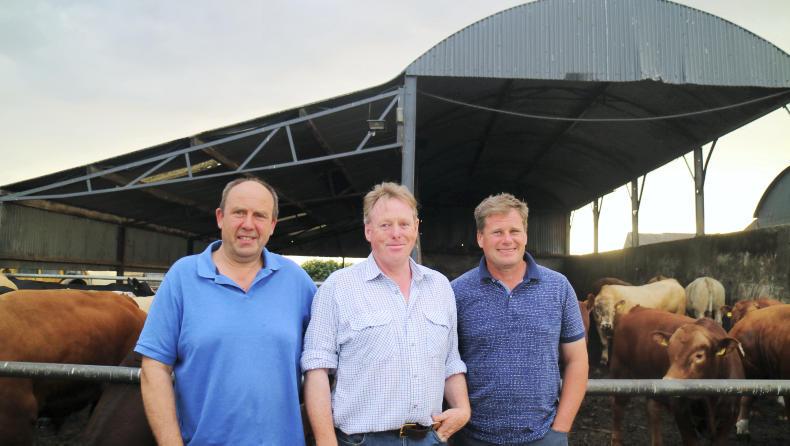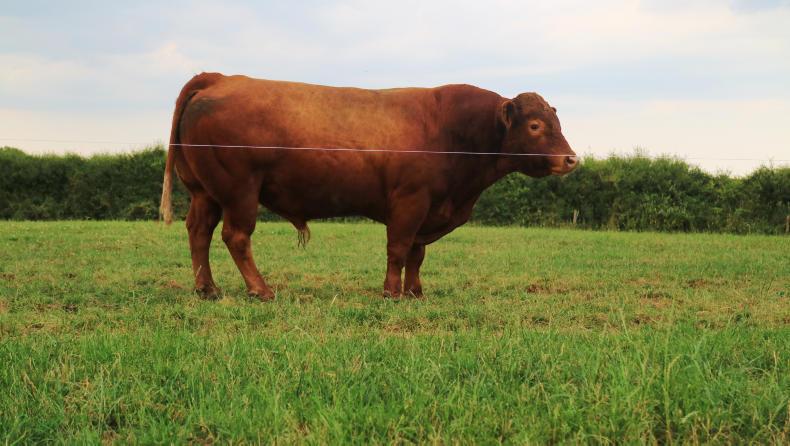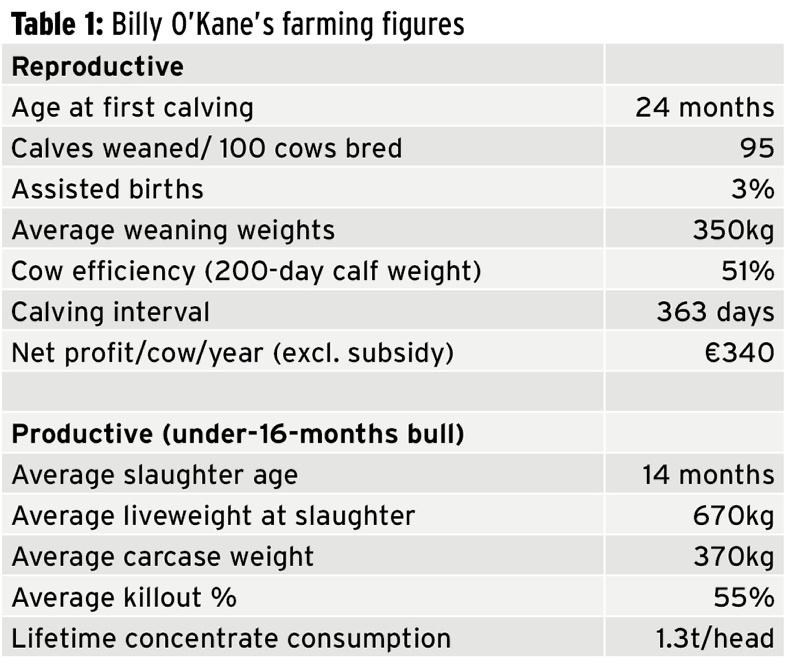“For me, the three key criteria for a good breeding animal are toes, teats and temperament,” said Billy O’Kane at the recent ICSA suckler farm walk. “Any time I am choosing a replacement heifer or cow, I look to make sure they have good teats, they aren’t lame or have bad feet, and they are nice and quiet.”
O’Kane, who is farming Stabiliser cattle in Ballymena in Co Antrim, and who has previously been named Farmers Weekly UK beef farmer of the year, told the audience that, for him, the Stabiliser breed constantly ticks these three boxes.
Stabilisers
Stabiliser is a breed which was originally developed in the US and was subsequently brought to the UK and, in more recent years, Ireland. The breed was built on the concept of hybrid vigour, which is essentially cross-breeding to inherit the best traits from each breed. In the case of stabilisers, the breed is a four-way hybrid of Simmental, Hereford, Red Angus and Gelbvieh, a German breed.
According to O’Kane, the breed has the ability to do for the beef industry what modern chicken and pig breeds have done for their respective industries.
“Stabilisers are the same as the modern chicken or pig, except with a rumen," he said.
O’Kane went on to outline the performance of his herd and the massive benefits the Stabiliser breed has been able to contribute.
“I believe Stabliser cattle have the ability to generate an extra €350/cow/year”, he pointed out. “Stabilisers are purpose-built, maternal cattle and their ability to convert feed, to have calving assistance figures of below 2%, to produce bulls that can finish at 14 months and to have an extremely high weaning efficiency can allow a farmer to hit key performance indicators and increase their profit,” he concluded.
The performance figures of Billy’s cattle are shown in table 1.

Breeding
O’Kane, who is a vet by profession, also hit on some very interesting points of advice around breeding.
On the topic of two-year-old calving, he said: "The secret of calving animals at 24 months is to look after them very well in their first winter. They need to be getting 1.5kg to 2kg of meal. It is also very important to use an easy-calving bull on these heifers.”
Furthermore, he went on to highlight the issue of bull fertility and the effect this can subsequently have on daughter fertility.
“Bulls with big testicles will be far more fertile than ones with small testicles”, he said. “But as well as that, a bull with big testicles will have daughters with much higher fertility, and vice versa.”
Host farmer Sean Hayden is farming 100 sucklers in Urlingford, Tipperary. He also uses the Stabiliser breed. To hear more about Sean’s farming system, watch the video below.






 This is a subscriber-only article
This is a subscriber-only article













SHARING OPTIONS: